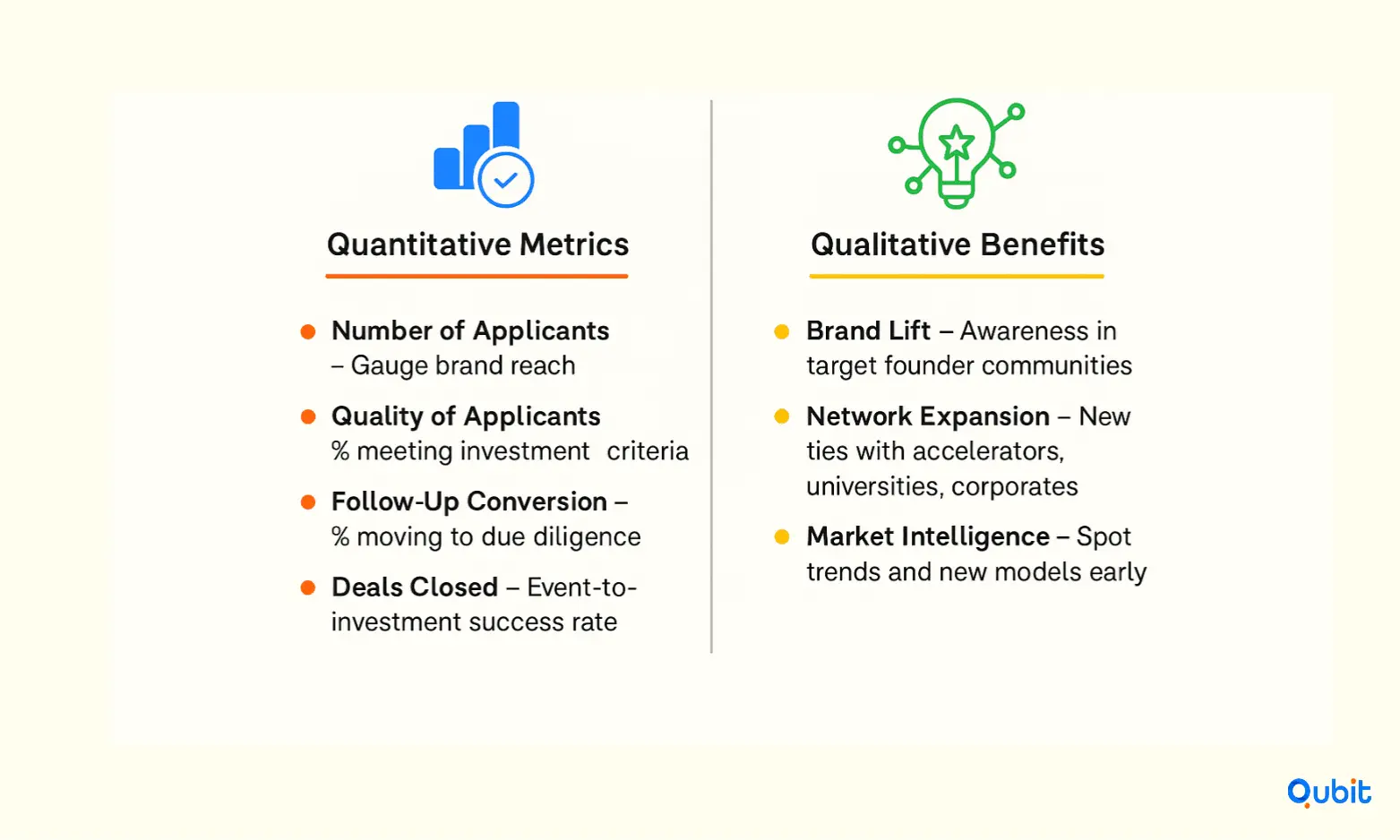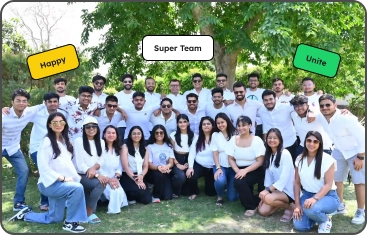Startup competitions have become a dynamic way to discover and engage with innovative ventures. These events, often structured as pitch competitions, provide a platform for entrepreneurs to showcase their ideas while offering investors a front-row seat to emerging opportunities. Beyond the excitement of the competition, these challenges are a strategic tool for fostering deal flow, connecting investors with high-potential startups.
Detailed analyses of diverse tactics are presented in effective-outreach-channels-investors, providing insight into how different channels contribute to your engagement with quality startups. By combining the right outreach strategies with well-executed competitions, organizations can build a robust pipeline of promising ventures.
Why Startup Challenges Work for Investors
1. Efficient Filtering of Talent
In traditional inbound deal flow, investors receive a flood of decks that vary wildly in quality and relevance. Challenges reverse this by pre-filtering startups through a structured application process. Founders who participate are already signaling they’re serious, responsive, and aligned with your investment focus. This makes it far more likely that your pipeline is populated with credible, coachable teams.
2. Early Access to Hidden Gems
Not every great startup actively pitches to investors. Some founders stay heads-down, building product, until something pulls them into the spotlight. A well-branded challenge — especially one with sector relevance — can surface these under-the-radar teams earlier than your peers. Being first to spot and engage with them can yield huge returns.
3. Seeing Founders in Action
Pitch decks are one thing; seeing how a founder handles Q&A under pressure, adapts feedback, and interacts with potential partners in real time is another. Competitions let you observe execution skills and cultural fit, which are often better predictors of success than a polished slide deck.
4. Building a Proprietary Sourcing Channel
If your challenge becomes a recurring annual or biannual event, it turns into a sustainable sourcing funnel that competitors can’t easily replicate. Founders start to seek you out proactively, knowing your challenge has a reputation for fairness, exposure, and tangible outcomes.
Defining the Investor’s Strategic Objective
Before you send out the first press release, you need clarity on why you’re running the challenge in the first place. A vague “let’s find good startups” won’t cut it.
Ask yourself:
- Are you looking for investment-ready startups in a specific stage (pre-seed, seed, Series A)?
- Is the focus sector-specific (e.g., climate tech, fintech, healthtech) or broad?
- Do you want to identify companies for direct investment, co-investment with partners, or for entry into your accelerator/incubator?
- Is brand positioning, e.g., becoming “the go-to investor for X industry” , a secondary or primary goal?
Your answers here will shape everything , from eligibility criteria and marketing channels to judging panels and follow-up processes.
Designing a Challenge That Attracts the Right Startups
Crafting the Value Proposition for Founders
Here’s the harsh truth: most founders have pitch fatigue. They’ve sat through too many competitions where the “prize” is a meaningless certificate, a small cash check, or vague “exposure.” To attract serious, high-quality teams, your challenge must offer real value.
Some high-impact incentives include:
- Direct Investment: Offering a pre-committed investment amount for the winner(s) instantly makes the challenge credible.
- Fast-Track to Funding: Skip the usual multi-month VC process for the top finalists.
- Access to Strategic Partners: Introduce winners to corporate partners, distribution channels, or pilot opportunities.
- Mentorship & Resources: Include a program with investor mentorship, legal/accounting credits, or cloud services.
The clearer and more tangible your value proposition, the more serious the applications you’ll receive.
2. Choosing the Right Format
Your challenge format should match both your goals and the behavior of your target founders:
- Single-Day Pitch Event: Great for branding and fast decision-making, but requires strong pre-selection.
- Multi-Stage Competition: Allows you to evaluate execution over time (e.g., initial pitch, followed by a product demo and a traction milestone).
- Problem-Solving Challenge: Instead of a general pitch, pose a sector-specific problem and invite startups to propose solutions. This attracts teams aligned with your thesis.
3. Setting Clear Eligibility Criteria
Don’t leave it open-ended. Define the guardrails:
- Funding stage (bootstrapped, pre-seed, seed).
- Revenue or traction minimums.
- Geographic focus.
- Industry verticals.
These criteria serve as a filter so your team’s time is spent on reviewing truly relevant startups.
Essential Insights on Startup Competitions and Ecosystem Building
Startup competitions are more than just a platform for pitching ideas; they are catalysts for fostering innovation and building inclusive startup ecosystems. Events like the Morgan Stanley Inclusive Ventures Lab’s global pitch competitions exemplify this by creating opportunities for diverse entrepreneurs to connect with seasoned investors and scale their ventures.
Driving Regional Diversity and Investor Engagement
The Morgan Stanley Inclusive Ventures Lab has hosted pitch competitions featuring 50 founders, showcasing the scale of its outreach. These events bring together startups from varied backgrounds, ensuring regional diversity and a broad spectrum of innovative ideas. By presenting to experienced investment professionals, these entrepreneurs gain valuable exposure and feedback, which are critical for refining their business models.
Moreover, the competitions are designed to cultivate strong investor networks. Through strategic engagement, investors are introduced to promising startups, creating a robust deal flow. For instance, the program’s five-month accelerator provides not only funding but also mentoring and a responsive entrepreneurship curriculum, equipping startups with the tools to thrive.
Scaling Startups Through Strategic Support
One of the standout features of the Morgan Stanley Inclusive Ventures Lab is its commitment to inclusivity. Selected startups receive $250,000 or £250,000 in funding, enabling them to scale their operations effectively. This financial support, combined with mentorship, helps startups overcome common challenges such as limited access to capital and resources.
Additionally, the program’s focus on future-facing topics, like AI’s impact on business models, ensures that startups remain competitive in evolving markets. For example, discussions at a Budapest event highlighted how AI is reshaping go-to-market strategies, preparing startups for long-term success.
Complementing Startup Discovery with Social Media
For investors, discovering innovative startups doesn’t end with competitions. Social platforms like LinkedIn play a pivotal role in identifying promising ventures. A detailed discussion on this can be found in investors-find-startups-linkedin, which explains how social media complements traditional approaches to startup discovery.
By combining the structured support of accelerators with the dynamic reach of social platforms, the ecosystem for startups becomes more inclusive and interconnected.
Becoming a Resource for Startups
Investors can further enhance their engagement by positioning themselves as valuable resources. A deeper dive into this strategy is available in content-marketing-for-investors, which outlines how aligning informational content with outreach efforts can attract and support startups effectively.
Through initiatives like the Morgan Stanley Inclusive Ventures Lab and strategic content marketing, the path to building a thriving, inclusive startup ecosystem becomes clearer.
For early-stage startups, pitch competitions offer more than just funding opportunities—they provide a stage to showcase innovation, connect with investors, and gain invaluable exposure. This curated list of 16 competitions highlights events tailored to different regions and industries, helping founders identify platforms that align with their growth strategies.
Marketing & Promotion Strategies for Maximum Deal Flow
Running a competition is only as effective as the quality and volume of applicants you can attract. This is where many investor-led challenges fall flat, they announce the event with minimal outreach, then wonder why only a handful of startups apply. For strong deal flow, your marketing strategy needs to be intentional, multi-channel, and founder-focused.
1. Use Your Existing Network First
Your warm network is the fastest path to credible applicants. Start by:
- Notifying Portfolio Founders: They may know other quality startups who aren’t yet on your radar.
- Tapping Partner Networks: Co-investors, accelerators, and incubators can refer relevant startups.
- Engaging Industry Associations: Sector-specific bodies often have startup directories or mailing lists.
Warm referrals increase the odds of attracting serious teams rather than pitch hobbyists.
2. Use Targeted Founder Communities
Generic press releases won’t cut it. You need to be where founders actually spend their time:
- Slack/Discord Groups: Many sector-specific founder groups welcome challenge announcements.
- Founder Platforms: Sites like AngelList, F6S, and Seedrs often have challenge/event listings.
- University Entrepreneurship Hubs: If your thesis includes younger teams, campus incubators are gold mines.
3. Content-Driven Promotion
Instead of only saying “apply now,” share value-first content to position your challenge as worth the effort. Examples:
- A short LinkedIn post or video about “What We Look For in Startups” from the judging panel.
- A blog post outlining past winners’ success stories.
- A “Behind the Scenes” livestream of your selection process (without giving away confidential details).
By showcasing transparency and credibility, you differentiate your challenge from the sea of opportunistic pitch calls.
4. Incentivize Early Applications
Founders are often last-minute creatures. Offering small bonuses for early applications — like guaranteed feedback from an investor or priority review — creates urgency and improves your review timeline.
Structuring the Selection & Judging Process
Your competition will stand or fall based on how fair, efficient, and insightful your selection process is. Poorly run judging processes can tank your brand with the founder community.
1. Pre-Screening for Fit
Before you even think about live pitches, filter out startups that don’t meet your basic investment or sector criteria. This can be done via:
- Online Application Forms: Include pointed questions about traction, funding, and market fit.
- Short Video Submissions: Helps assess communication skills and authenticity quickly.
- Initial Review Committee: Use a mix of your investment team and external advisors.
2. Multi-Stage Evaluation
A tiered selection process allows you to evaluate more than just pitch skills:
- Stage 1 – Paper Screening: Review decks, financials, and market data.
- Stage 2 – Virtual Pitches: Observe presentation and Q&A handling.
- Stage 3 – Deep Dive Interviews: Assess founder mindset, execution strategy, and cultural fit.
Each stage weeds out weaker fits and keeps your event day focused on top contenders.
3. Diverse & Credible Judging Panel
Your judging panel isn’t just there to score pitches, it’s part of your brand signal. Include:
- Internal Investors: You need decision-makers in the room.
- Sector Experts: Adds technical credibility.
- Corporate Partners: Can evaluate market potential from a buyer’s perspective.
Make sure every judge understands your investment thesis to maintain consistency in scoring.
Event Day Execution for Maximum Insight
1. Maintain a Tight Format
Attention spans are short, even in high-stakes events. Keep pitches to 5–7 minutes with 3–5 minutes of Q&A. Use strict timekeeping to respect both founders and judges.
2. Go Beyond the Stage
Some of the best due diligence happens off-mic. Build in networking breaks, one-on-one mentoring slots, or informal roundtables where founders and investors can have candid conversations.
3. Capture the Data
Have a system in place to record pitch videos, collect judges’ notes, and track founder follow-ups. This isn’t just for record-keeping, it feeds into your post-event deal flow pipeline.
Effective PR strategies can amplify the visibility gained through pitch competitions. An examination of communication strategies is provided in investor-pr-strategies, which outlines how coordinated PR and media efforts seamlessly integrate with your broader outreach objectives.
Post-Event Conversion: Turning Finalists into Portfolio Companies
Too many investors treat startup challenges like a one-off showpiece — a nice day of pitches, some photos for LinkedIn, and then… nothing. If your goal is deal flow, the real work begins after the event.
1. Immediate Follow-Up While Momentum Is High
The clock is ticking after the competition. Founders are often in multiple conversations, and enthusiasm fades quickly if investors go silent. Within 48 hours of the event, you should:
- Email finalists with next steps (due diligence, meetings, data requests).
- Provide constructive feedback to non-finalists — it builds goodwill and keeps your brand strong in the community.
- Share photos and videos publicly, tagging startups to boost their visibility.
The faster your follow-up, the stronger the signal that you’re a serious, decisive investor.
2. Streamlining Due Diligence
Since you’ve already seen these startups pitch and interact, part of your diligence is done. Now’s the time to dig deeper:
- Review full financials, legal structure, and cap table.
- Validate traction claims with customer or user references.
- Assess tech/IP through a quick technical audit or expert review.
Aim for a shortened diligence cycle — ideally under 4–6 weeks — to maintain founder engagement.
3. Using Partner Ecosystems
If you can’t invest directly in all finalists, connect them to other investors or corporate partners who might be a fit. This builds your reputation as a connector, making more founders want to apply in future editions.
4. Tracking Long-Term Relationships
Not every promising startup is investable today. Maintain a “watchlist” pipeline for companies you want to track over the next 12–24 months. Invite them to future portfolio events or check in quarterly. Many of your best deals may come from this slow-burn relationship-building.
Measuring ROI Beyond the Winner’s Check
If you want your competition to become a repeatable deal flow engine, you must measure its ROI — and not just in terms of immediate investments.

1. Quantitative Metrics
- Number of Applicants: A proxy for brand reach.
- Quality of Applicants: % of applicants meeting your investment criteria.
- Follow-Up Conversion Rate: % of finalists moving to due diligence.
- Deals Closed: The ultimate measure of event-to-investment success.
- Partnerships Formed: Corporate pilots, joint ventures, or co-investment deals.
2. Qualitative Benefits
- Brand Lift: Increased awareness among target founder communities.
- Network Expansion: New partnerships with accelerators, universities, or corporates.
- Market Intelligence: Spotting emerging trends and business models early.
The key is to treat this as a portfolio strategy, you might close only one deal now, but the intelligence and relationships you gain can influence many future investments.
Conclusion
Pitch competitions are transformative for early-stage startups, offering visibility, funding, and networking opportunities that can accelerate growth. From global platforms like the Startup World Cup to region-specific events like The Europas Awards, each competition provides unique benefits tailored to different industries and markets.
Conclusion
Startup competitions and inclusive ecosystems thrive when built on strategic insights and real-world examples. Throughout this blog, we’ve explored actionable strategies that empower both investors and startups to foster meaningful connections and drive growth. By focusing on practical approaches, such as creating diverse opportunities and leveraging authentic case studies, stakeholders can unlock new avenues for collaboration and innovation.
We encourage you to apply these insights to your own investor outreach and growth strategies. Whether you're an investor seeking high-potential startups or a founder aiming to scale, the principles discussed here can serve as a roadmap for success.
If you're ready to connect with high-potential startups, our Startup Matchmaking service is here to help. Let us support you in building impactful partnerships that drive results.
Key takeaways
- Global pitch competitions significantly boost deal flow and foster inclusive startup ecosystems.
- Insights from Morgan Stanley Inclusive Ventures Lab highlight effective strategies and real-world success stories.
- Regional highlights reveal tailored opportunities for startup growth across key global cities.
- Pitch competitions enhance startup visibility and drive investor engagement through strategic networking.
- Leveraging follow-up strategies and emerging technologies can further optimize competition outcomes.
Frequently asked Questions
What are the best startup competition ideas?
Innovative approaches include hosting virtual pitch events, creating themed competitions centered on emerging technologies, and designing niche challenges that encourage creativity while attracting targeted investor interest.






